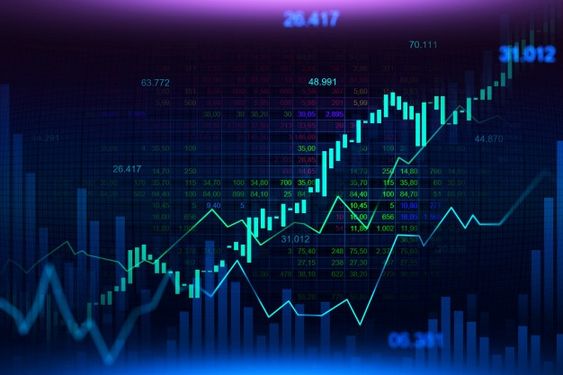Commodities are one of the asset classes that can be bought and sold in trading. Commodities are some of the resources we use in our daily lives. A commodity, in general, is a basic good that can be exchanged for other commodities or money. They are frequently utilized in many processes and are components of finished products.
What are commodities?
Commodities that can be bought or sold for trading purposes are classified as either hard or soft. Volatility, supply/demand, and influencing variables are all distinct aspects of both of these categories.
Even though commodities and currencies are two distinct assets, the vast majority of Forex brokers include a variety of commodity groups in their trading packages. Another link between Forex and commodities is that commodity prices are naturally stated in currencies, and events in either market can have an impact on the other.
However, in addition to their regular use, such commodities can be utilized for financial exchange – trading, in brief. Commodities are traded in the same way as other assets, such as Forex pairs, stocks, or anything else: buy when the price is low and sell when the price is high.
What is Forex commodity trading?
Many Forex brokers incorporate commodities in their trading packages when they offer currency pairings to their traders. This means that merchants can swap not only money but also commodities such as oil, gold, crops, and other raw materials.
Furthermore, as previously stated, commodity prices are expressed in currencies such as the US dollar. As a result, events in any of these markets might have a significant impact on the other.
Basics of commodities trading
The approach used to trade commodities is similar to that used to trade other securities. For example, if a trader wishes to trade oil, he or she will typically buy it while the price is low and then sell it when the price begins to rise. When the price of oil hits the desired level and begins to fall gradually, they sell it. The difference between the high selling and low buying prices will result in a payout.
Commodity trading can be done in a variety of ways, both online and offline. The simplest way to accomplish this is to enter into a futures contract and purchase a commodity at a specific price when it is delivered in the future. However, there are indirect methods of trading, such as acquiring stocks in firms based on commodities and their pricing, purchasing mutual or index funds that invest in several such companies at once, and many more.
Types of commodities trading
Commodities are classified as either hard or soft. Hard and soft goods, in turn, have distinct elements, there are several types of commodities trading such as:
Hard: – Metals, Energy
Soft: – Livestock, Agriculture
Hard commodities
This list of commodities covers resources that are normally obtained from the earth through mining (metals) or extraction operations (energy). They are, in a nutshell, natural resources.
Precious metals such as gold, silver, and platinum are included in the metal sub-category, as are other metals such as iron, aluminum, and copper. Because of its stability, the entire economy is strongly reliant on gold, particularly during times of economic slowdown: when ordinary currencies become unstable, individuals and corporations tend to invest in gold to safeguard the long-term worth of their property.
Then there’s the sub-category of energy. It is a combination of natural gas and oil reserves. These resources, as previously stated, can be harvested from the ground. Natural gas is the most common resource utilized for personal and commercial reasons, such as heating our homes and businesses.
Oil
When it comes to its impact on the global economy and politics, crude oil justifiably holds the top spot on the commodity market and in the sub-category of energy. For one thing, it meets over half of the world’s energy needs; for another, it is the most traded commodity on the market.
And it’s easy to see why: we drive our automobiles by filling up our tanks with gasoline, we receive orders from overseas by ships that run on fuel, and we fly on planes that run on jet fuel. But, in addition to powering machinery, crude oil is used to produce plastic, which can be found in practically everything we own.
Soft commodities
unlike hard commodities, Soft commodities require additional work to be developed before they can be obtained. This means that to get wheat to bake bread, we must first plant the wheat seeds, nurture the land, and then reap the harvest. In a nutshell, this subcategory combines agricultural output and livestock production.
While agricultural production is the foundation of any great economy, some countries go a step further and exploit these commodities as their primary exporting economic resource. Avocado exports from Columbia, for example, or cocoa bean exports from Ghana, are the primary sources of income for these countries.
Factors of commodities
Supply and demand
When it comes to commodity trading prices, supply and demand pressures are the most important elements that determine them. The amount of a commodity offered to the market is referred to as supply, whereas the amount of a commodity that people genuinely desire to buy is referred to as demand.
Prices will fall if the supply of a commodity exceeds the demand, according to basic economics. And if the demand exceeds the supply, prices will rise. The same holds for the inverse circumstances.
Traders can obtain information about commodity supply and demand from private research firms or government departments.
The US dollar is another significant contributing factor. Because the USD is the primary currency used in the majority of global economic transactions, its stability or volatility affects commodity prices. If the currency is strong, for example, the price of oil will be reduced as well.
Other elements to consider include inflation and GDP (gross domestic product). Inflation indicates that the prices of products and services are rising, which means that commodity prices are rising as well. Prices for commodities and other goods/services are falling as a result of deflation.

